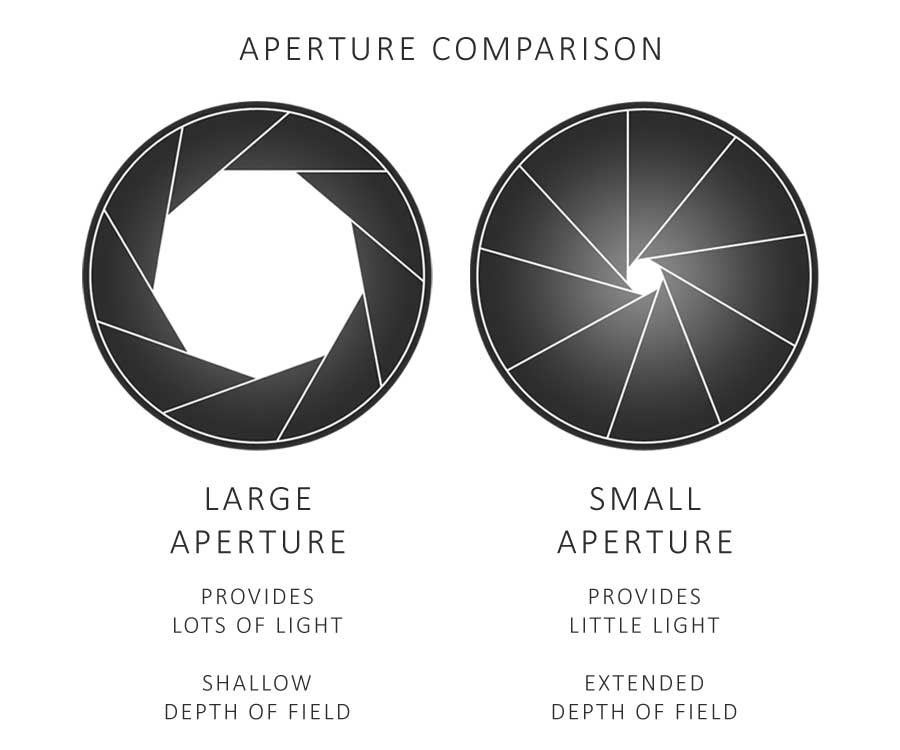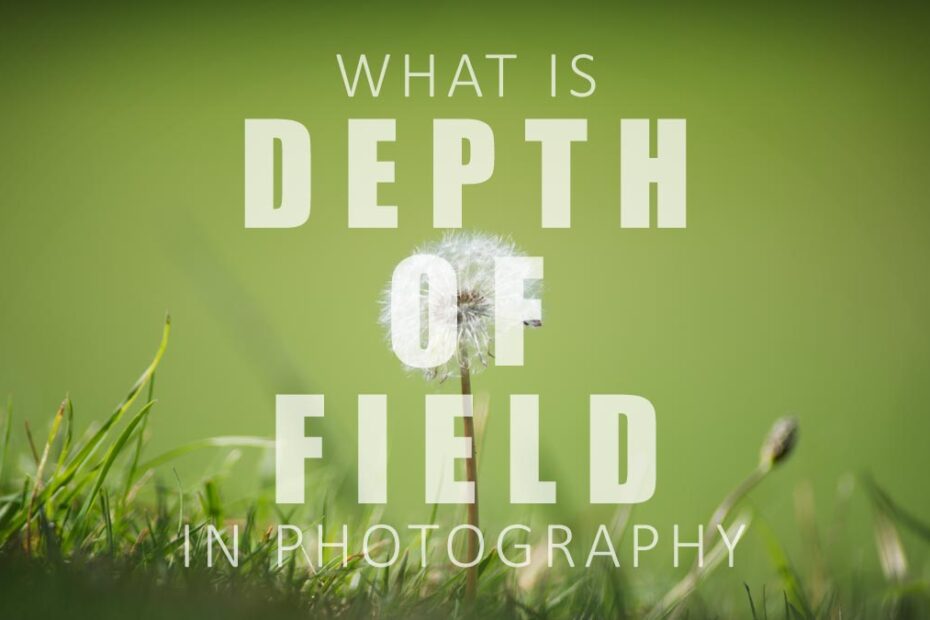Depth of field in Photography is a measure of how much of your photo appears sharp. For example, a shallow depth of field means your in-focus subject appears sharp whilst their immediate background is blurred. In contrast, a deep depth of field is when everything from nearby objects to distant scenery appears sharp and in-focus.
Your depth of field depends on your lens focal length, aperture, and the distance between you and your subject. By mastering these 3 factors, you can blur backgrounds or add sharpness to your photos. Jump to summary
Table of Contents
- Depth of Field in Photography Explained
- What affects depth of field in photography?
- Why depth of field is used
- The best lenses for depth of field
- Does sensor size affect depth of field
- Summary
- Related Reading
Depth of Field in Photography Explained
Your camera can only focus on one object, or more specifically, at one distance.
For example, you might set your focus to a subject 10 meters away. And as a result, everything at 10 meters appears sharp and in-focus. However, anything closer or further away is, technically speaking, out of focus.
Now, whether these out of focus objects appear sharp or blurred depends on your depth of field. If your depth of field is deep enough, out of focus objects can appear as sharp as those objects in focus.
On the other hand, if your depth of field is very shallow, out of focus objects may appear blurred beyond recognition.
What affects depth of field in photography?
Your depth of field is determined by 3 factors. Focal length, aperture and distance to in-focus subject.
1. Focal Length
The longer your focal length, the more shallow depth of field becomes. For example, a 50mm lens has a far shallower depth of field than a 28mm lens.
In fact, the reason why smartphones rely on digital blur is that their tiny lenses have a focal length of around 3mm. As a result, even dramatically out-of-focus objects still appear sharp.

In contrast, portrait photographers often use lenses with an 85mm (or greater) focal length. At 85mm, the depth of field can be very shallow and enables the photographer to blur backgrounds to mush.
To sum up, if you want blur – use the longest focal length you can get your hands on.
2. Aperture
The larger your lens aperture, the shallower depth of field becomes. For example, a large F1.8 aperture provides a very shallow depth of field, whereas a small aperture such as F11 produces a deep depth of field.

Therefore, if you want to blur backgrounds, use the largest aperture (smallest F-number) you have.

3. Distance to Subject
The closer you can get to your subject, the shallower depth of field becomes.
For instance, if you take a few steps towards your in-focus subject, your depth of field becomes more shallow. In contrast, stepping back increases your depth of field.
This effect is best observed at its extremes. Try photographing a subject at point-blank range. You may even squeeze a little optical blur out of your smartphone.

Why depth of field is used
Depth of field is used for creative effect. For instance, landscape photographers seek deep depth of field because they want the entire scene, front-to-back, to appear sharp. Learn about Hyperfocal Distance for sharper landscape photos.
On the other hand, portrait photographers often prefer shallow depth of field since the contrast between an in-focus, sharp subject and a blurred background produces an attractive, 3D-like effect. Shallow depth of field is also useful for blurring-away unwelcome and distracting background clutter such as passers-by, litter bins, etc.

The best lenses for depth of field
If you are photographing landscapes, you will most likely want as much depth of field as possible. Moreover, you will probably want a wide field of views to capture those vast vistas.
Therefore, you are best looking at lenses with an equivalent focal length of 18, 24, or 28mm. Alternatively, you can buy a zoom that covers the whole range. Not only do these focal lengths provide a wide view, but they also offer a substantial depth of field.
Another benefit of deep depth of field photography is that you don’t have to buy large, heavy, and expensive large-aperture lenses. Although a large aperture is ideal for light gathering, landscape photographers are better off putting the money towards a tripod.
Of course, it’s the opposite for photographers requiring a shallow depth of field. The longer the focal length and the larger the aperture, the better.

As a result, such lenses can be expensive, but there are some notable exceptions. The humble 50mm F1.8 or nifty-fifty can melt a background for a few hundred dollars.
If you want to shoot portraits, a 50mm will do, but an 85mm F1.4/1.8 is even better. If you prefer zooms, portrait-pros enjoy using the sports-orientated 70-200 F2.8.
The best lenses for shallow depth of field are large aperture telephoto lenses.
However, most camera systems offer the equivalent of a nifty fifty, which is to say an affordable fast F1.8 aperture 50mm lens. If you are looking for background blur on a budget. Check out Best Lenses
Does sensor size affect depth of field
Not exactly. An image sensor simply renders whatever image the lens gives it. Therefore, your depth of field remains dependent on aperture, focal length, and focus distance.
To illustrate, let’s say I take a photo with my full-frame Nikon D750 and my trusty Nikon AF-S 50mm F1.8 lens. Then, I remove the 50mm and mount it to my smaller, APS-C sensor-based Nikon D90 and take the same photo.
In both photos, the depth of field would be identical since the lens is serving the same image to both cameras.
But…
Although sensor size does not affect the depth of field, it does affect the field of view. Whereas the 50mm lens provides my Nikon D750 with a 47-degree field of view, my Nikon D90’s smaller sensor only has room to capture a narrow 34-degree field of view.
In other words, compared to the photo taken with the Nikon D750, the photo taken with the D90 looks zoomed in.
Therefore, to get the same 47-degree field of view with my Nikon D90, I must trade the 50mm for a wider 32mm lens. And a shorter 32mm focal length has a deeper depth of field than a longer focal length of 50mm.
So while sensor size does not affect depth of field directly, it does so indirectly since larger sensors use longer focal lengths (with shallower depth of fields) to achieve the same field of view as small-sensor cameras. Phew.
Compare different sensor sizes
Summary
Depth of field is how much, in-front or behind your in-focus subject which appears sharp. For occasions where you want sharpness across the whole image, you need a deep depth of field. On the other hand, you may wish to blur your subject’s surroundings, in which case you need a shallow depth of field.
Controlling depth of field can be as simple as taking a step forward or back. Alternatively, you can achieve a shallow depth of field with a twist of a wrist and zoom your lens to a longer focal length or by dialing in a larger aperture.
Of course, in reality, your depth of field is the sum of all three factors.
As a result, your equipment is a major factor. Although smartphones advertise ‘equivalent’ focal lengths based on their field of view, depth of field is governed by physical focal length. Since the physical focal length of most smartphones is less than 3mm (to keep the phone slim), shallow depth of field perks such as background blur just is not possible unless you are within inches of your subject.
Yet, background blur is not a rich man’s game. An entry-level DSLR or mirrorless camera with a 35 or 50mm F1.8 lens will cost far less than a photography-orientated smartphone whilst delivering superior results.
If you do have a camera but are struggling to get the right amount of depth of field for landscapes, you will find this guide to hyperfocal distance most helpful.
Happy shooting.
